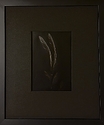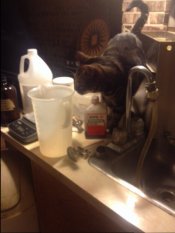This is one of those optimization problems you can't win. There are three constraints:
1) Minimal storage.
2) High cost of shipping + customs
3) Not generally advisable to divide dry developer powder, making large quantities wasteful instead of being more economical in shipping and customs due to fewer orders.
If you remove any one of these the solution is easy, e.g.:
1) (if you have storage): buy dektol or lpd or ansco 130 and store your stock and/or working solutions. You mix it all, they come in powders that are lower cost to ship, and you can batch up your orders to minimize customs charges.
2) (if shippings/customs was not expensive): buy concentrated liquid developer 1l at a time as needed.
3) (if you didn't need to mix all your powder at once): order dektol in quantity and mix only as needed.
Assuming the storage problem just can't be solved, and accepting that we can't change countries or shipping, that only leaves number 3 to play with.
So that's the one we should compromise. A couple ways it could be compromised:
* you could try dividing up a big batch of powdered dektol. It wouldn't be optimal, but if you mix up the powder carefully and divvy it up into small 1-session ziplocks, I'm sure it would make prints. There might be inconsistency between batches, but that might be offset by the convenience of mix-on-demand and minimal storage requirements. If I were you, I'd try it and see how it goes. You'd probably have to start each printing session with hot water to mix it with and then let it cool for use. But if it solved the overall problem, that seems minimally inconvenient and there are ways to work around it ( a bucket of ice water will cool your 2l bottle of dektol quickly enough ). It's a pain to divvy up the original batch with a dust mask, etc, but you wouldn't have to do it very often. It seems like the easiest compromise to me.
* you could try to tailor your entire process to the first 2 constraints only:
Use all your storage for hypo crystals, a box of washing soda, instant coffee, and a bottle of vitamin C powder. Then mix your caffenol developer and traditional fixer fresh for each session. Use vinegar from your kitchen for stop, or just use water. Possibly the only thing you'll ever need to order is the hypo, so make a big order of that and use most of your storage for that, to minimize shipping and customs. It's gonna be a stinky darkroom, but I'll bet you can make nice prints. This has a true positive side benefit too: because you are dumping everything after each printing session, it's nicer to dump mostly-used caffenol than still very active dektol. A variation on this theme would be to make 2 smallish bottles of highly concentrated soda and ascorbic acid, to make setup more convenient. Maybe a bottle of concentrated 130 to spike it with a couple spoonfuls like John does would make the developer act more normal. It solves all your problems, but you'd have to learn how to print with a new process, and there would be a learning curve and some challenges I'm sure.
I didn't mention your other constraint of using huge trays of liquids. That's another one that is not necessary and if you worked at it and were willing to try, you could probably use a lot less in each session, which would maximize the usefulness of your storage and save money too.
I think something has to break somewhere: either more storage, more money, or mixing powders a little at a time. The caffenol would be a fun adventure if nothing else!

But you have opened my eyes to the problem: I went to B&H and tried for myself. That's why folks from Australia and New Zealand "make orders" from friends who are traveling in the US or Europe, or make big combined orders so everything comes in one big shipment for several people...












